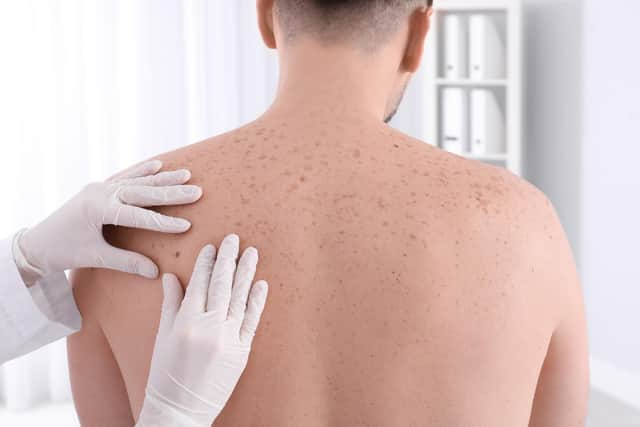Health bosses' warning as latest Doncaster skin cancer figures revealed
and live on Freeview channel 276
Doncaster and Sheffield have both seen a fall in patients diagnosed with melanoma, the most serious skin cancer – but local health experts are warning the illness still presents a risk.
Both areas have seen the rate of cases of Melanoma dip from 2014 to 2019, but during the same time period, cases have risen in neighbouring Rotherham and Barnsley.


Advertisement
Hide AdAdvertisement
Hide AdDoncaster’s figures were down from 64 cases diagnosed in 2014 to 62 in 2019, a 3.1 per cent fall. It placed the borough 92nd out of 108 health authority areas in England, meaning it has one of the lowest number of diagnosed cases per hundred thousand people (19.9). There were 354 cases diagnosed over the six year period.
Sheffield’s figures are down from 116 cases to 107, 7.8 per cent. It was 98th out of 108 health authority areas, (18.3 diagnosed per 100,000). There were 692 cases diagnosed over the six year period.
But Barnsley saw a 37.5 per cent rise in new cases diagnosed, from 48 to 66 (26.7 per 100,000), and Rotherham saw a 16 per cent rise from 49 to 57 (21.5 per 100,000).
Doncaster’s deputy director of public health, Rachael Leslie said: “It is encouraging to see that the rates of skin cancer in Doncaster appear to be lower than what we have seen previously. However, it is important that we continue to take precautions to protect our skin especially with the summer sun approaching. You can do this by wearing a hat, wearing clothing that covers your skin and using and reapplying a high factor sun cream. This is especially important for children.
Advertisement
Hide AdAdvertisement
Hide Ad“It is vital that if anybody notices a change in their skin that they speak to their GP. To find out more about the signs and symptoms of skin cancer, please visit the NHS website.”
Sheffield’s director of public Health, Greg Fell said although it was good to see a figure that had fallen in the city, people still needed to be cautious over the dangers of skin cancer, and warned that the comparatively small number of cases in local figures, rather than national figures, meant he remained wary of the significance of the statistics.
He said: “If there is a reason why Sheffield is among the lower figures, it could be down to something as simple as we’re further north than many places, so get less sun.”
He added regardless of the rate, most skin cancer was preventable and treatable, particularly if picked up early.
Nationally, diagnoses rose 16 per cent over five years.
Causes of skin cancer
Advertisement
Hide AdAdvertisement
Hide AdMatthew Gass, of the British Association of Dermatologists (BAD), said: “Skin cancer cases have been on the rise since the 1970s and it is now the most common cancer in the UK."
He said factors in the rise may include an ageing population, better cancer registration practices and changes to sun-seeking behaviour.
The most common cause of skin cancer is exposure to ultraviolet light from the sun or sunbeds.
Mr Gass said the three main ways to better protect yourself from the sun are shade, clothing and sunscreen.
Advertisement
Hide AdAdvertisement
Hide Ad“As a last line of defence, wear sunscreen with a minimum SPF of 30 and UVA protection,” he added.

